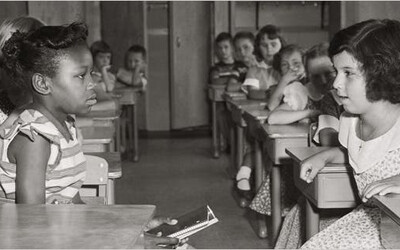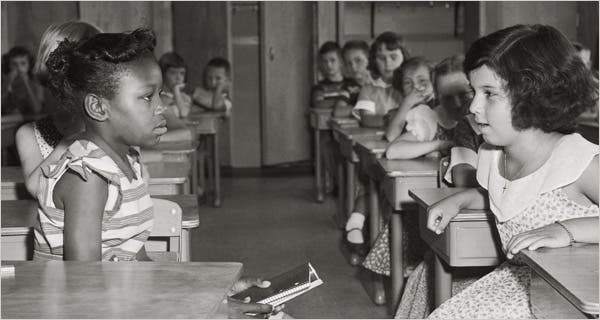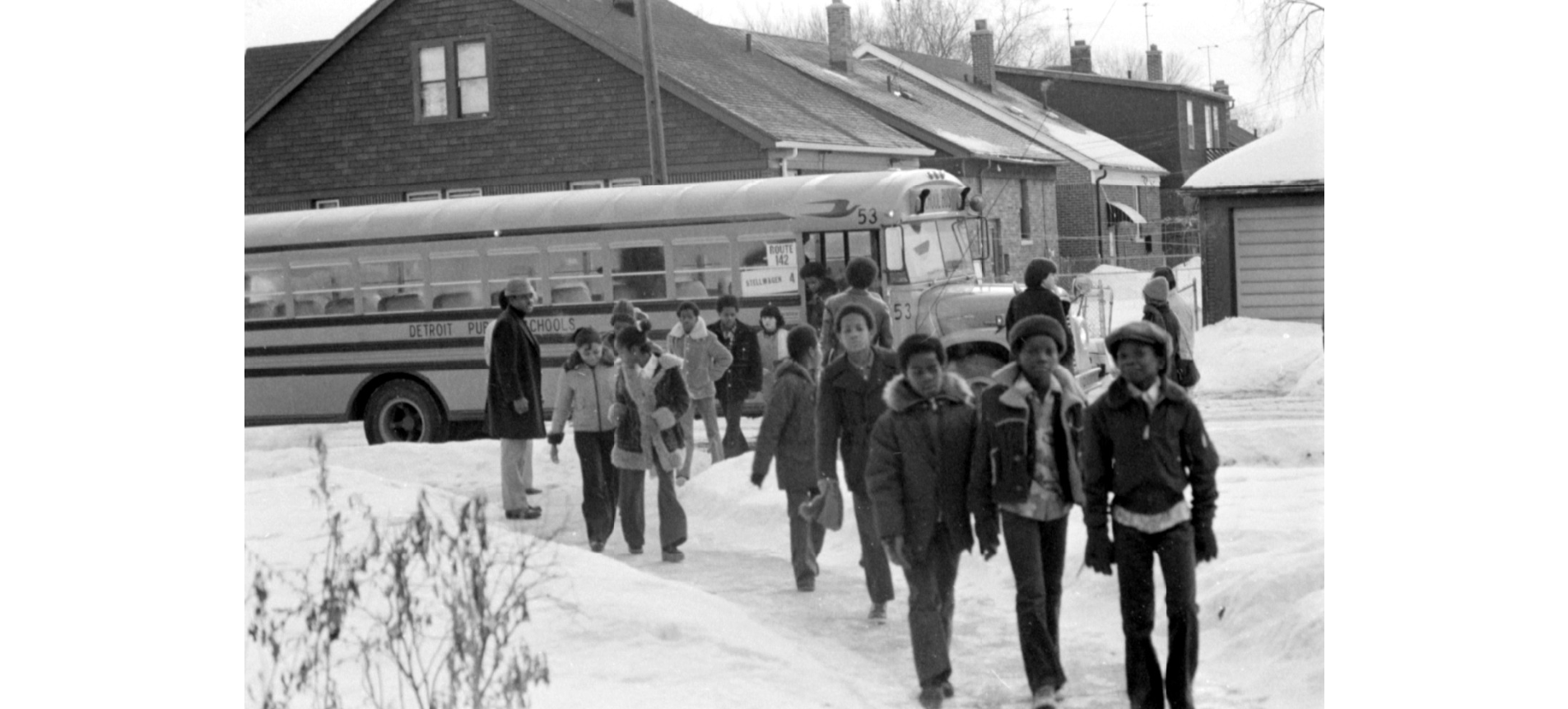




On May 17, 1954, the United States Supreme Court announced its decision in the case of Brown v. Board of Education of Topeka, a historic unanimous ruling that state-sponsored racial segregation of children in America’s public schools was unconstitutional. The Brown decision covered five different cases. First, in Briggs v. Elliott, 30 parents who began to gather in 1947 sued the school district in Clarendon County, South Carolina in the hope to improve the educational conditions for their black children. Charles J. Ogletree, Jr. writes about this case: “After the lawsuit was filed, Harry Briggs and his wife, the named plaintiffs, were both fired from their jobs and other blacks who participated in the lawsuit suffered threats and damage to their property from angry South Carolina citizens.” In Brown v. Board of Education, black parents, including the Brown family, sued the Topeka school board to desegregate the Topeka school system. Oliver Brown’s daughter Linda was forced to attend a segregated school that was located a great distance from her home, even though a white elementary school was nearby: Brown had tried to enroll Linda in the latter, but he was turned down by the school principal. Davis v. County School Board pertained to Virginia’s segregated school system, which infringed upon the 14th Amendment of the Constitution according to the complainants. The fact that Prince Edward County’s white population maintained unequal and underfunded school facilities for black students such as at the Moton High School was at the center of this case. Badly maintained school facilities for African American children were also at the heart of Belton v. Gebhart, in two separate – albeit similar – cases in Delaware. Finally, Bolling v. Sharpe concerned the Washington D.C. all-white Philip Sousa Junior High School, in which black pupils, among which Spottswood T. Bolling, Jr., had wished to enroll; however, when they arrived accompanied by their parents on the premises of the school on registration day, they were denied enrollment because of the color of their skin.
 Desegregated school on Ft. Meyers FL image credited to NY Times
Desegregated school on Ft. Meyers FL image credited to NY Times
The Court’s decision emphasized the importance of education in the exercise of democracy and citizenship, and in the access to a successful and meaningful life at the service of one’s society. Furthermore, it stated that segregation based on race in public schools denied black children access to equal opportunities in terms of education. The language in the Court’s judgement revealed that its decision was not just meant to apply to the schools directly concerned in the five Brown cases. It was not until May 31, 1955, though, that the question of Brown’s concrete implementation was framed by an official court decision, which soon came to be known as Brown II: however, instead of establishing clear time limits for the submission of desegregation plans by school districts, it was ordered that the desegregation of public schools should take place with “all deliberate speed.” This phrasing was the result of a compromise between the justices, who were divided on how to proceed – though many were in fact quite worried about the Deep South’s potentially violent reaction, especially if time limits were put in place for desegregation.
 Desegregated Detroit Public School busing in 1976 Image courtesy of Wayne State University
Desegregated Detroit Public School busing in 1976 Image courtesy of Wayne State University
While the court’s reluctance to take a more assertive position may have been seen by some as having ultimately favored some of the opponents of integration – the court’s rulings were, indeed, challenged often and through a variety of strategies throughout the years. Brown’s legacy in the effective ending of segregation in public education is indisputable. It is considered by some as perhaps the most essential court decision on race in United States history.
RESEARCH & WRITING
Louise-Helene Filion, Ph.D.
PHOTO RESEARCH
Rebecca Phoenix
Bibliography
“Brown v. Board of Education.” The National Archives and Records Administration, https://www.archives.gov/education/lessons/brown-v-board#background . Accessed 26 January 2022.
Kluger, Richard. Simple Justice. The History of Brown v. Board of Education and Black America’s Struggle for Equality, New York, First Vintage Books Edition, 1975, 823 p.
Ogletree, Charles J. Jr. All Deliberate Speed. Reflections on the first half century of Brown v. Board of Education, New York and London, W. W. Norton & Company, 2004, 365 p.
Patterson, James T. Brown v. Board of Education. A Civil Rights Milestone and Its Troubled Legacy, New York, Oxford University Press Inc., 2001, 285 p.